You are using an out of date browser. It may not display this or other websites correctly.
You should upgrade or use an alternative browser.
You should upgrade or use an alternative browser.
What is Chemical engineering: Definition and 227 Discussions
Chemical engineering is a certain type of engineering which deals with the study of operation and design of chemical plants as well as methods of improving production. Chemical engineers develop economical commercial processes to convert raw material into useful products. Chemical engineering uses principles of chemistry, physics, mathematics, biology, and economics to efficiently use, produce, design, transport and transform energy and materials. The work of chemical engineers can range from the utilization of nanotechnology and nanomaterials in the laboratory to large-scale industrial processes that convert chemicals, raw materials, living cells, microorganisms, and energy into useful forms and products. Chemical engineers are involved in many aspects of plant design and operation, including safety and hazard assessments, process design and analysis, modeling, control engineering, chemical reaction engineering, nuclear engineering, biological engineering, construction specification, and operating instructions.
Chemical engineers typically hold a degree in Chemical Engineering or Process Engineering. Practicing engineers may have professional certification and be accredited members of a professional body. Such bodies include the Institution of Chemical Engineers (IChemE) or the American Institute of Chemical Engineers (AIChE).
A degree in chemical engineering is directly linked with all of the other engineering disciplines, to various extents.
View More On Wikipedia.org
Chemical engineers typically hold a degree in Chemical Engineering or Process Engineering. Practicing engineers may have professional certification and be accredited members of a professional body. Such bodies include the Institution of Chemical Engineers (IChemE) or the American Institute of Chemical Engineers (AIChE).
A degree in chemical engineering is directly linked with all of the other engineering disciplines, to various extents.
View More On Wikipedia.org
-

Engineering Building a peripheral for obtaining data from water
I'm working for a project with a goal of analyzing data obtained from a device that extract data from bodies of water, such as bacterias found, the chemical levels, etc. I've been instructed to use existing equipment for it to work. What I've been recommended to use include: bateries, solar...- Ranger1222
- Thread
- Replies: 4
- Forum: Engineering and Comp Sci Homework Help
-

Co-free, High-Energy, Fast-Charging, Long-Lasting Li-Ion Batteries?
https://phys.org/news/2024-01-cobalt-free-batteries-power-cars.html https://pubs.acs.org/doi/10.1021/acscentsci.3c01478 Co is a critical mineral with a vulnerable supply chain. Ideally, it would be a great benefit to reduce it's need and consumption. The authors state that they...- Astronuc
- Thread
- Replies: 0
- Forum: Materials and Chemical Engineering
-
R
Troubleshooting of WFE - (Wiped Film Evaporator)
Feed Details : Component X : 80% ( Boiling point : 105 deg.C) Component Y : 20% ( Boiling point : 256 deg.C) Feed Rate : 600 kg/hr Heating medium : Steam @ 145 deg.C operating condition : 50 Torr, 90 deg.C ( Based on Aspen Flash Simulation). Desired Outcome : TO remove 99% of component X...- Rachit
- Thread
- Replies: 4
- Forum: Materials and Chemical Engineering
-

What is Joe Heer's Background and Interests in Chemical Engineering and Physics?
Name: Joseph (Joe) Heer Background: Chemical Engineering & Chemical Physics Work: Self-employed as Chemical Safety Consultant Physics Involvement: Volunteer, part-time research with local University Interests: Simplified "Effective Models" in particle physics, non-standard Energy & Information...- jmheer
- Thread
-
- Tags
- Chemical engineering
- Replies: 3
- Forum: New Member Introductions
-
D
Engineering How to find the volume of the pollutant dumped into the river?
The number of moles dumped into the river from the concentration at the measuring point by summing the amount of $$ \Delta{N} $$ between 20 and 50. $$ \int_{20}^{50} Q_{river}C(t)dt=777,60,000 moles $$ The center of the pulse is the mean residence time. $$ \frac{V}{Q}=35 $$ $$ Q=6000...- DumpmeAdrenaline
- Thread
-
- Tags
- Chemical engineering
- Replies: 1
- Forum: Engineering and Comp Sci Homework Help
-
D
'Residence' time distribution function for a Pulse input
Residence time distribution- the time an entering particle spends in a system before it leaves. The residence time of molecules in a system is measured using tracers. The response for a system is recorded for some type of perturbation. Consider $$ A+B \rightarrow C $$ and suppose we want to...- DumpmeAdrenaline
- Thread
- Replies: 14
- Forum: Materials and Chemical Engineering
-

I am trying to design an axial turbine for my project
TL;DR Summary: I have a problem designing an axial turbine, there is a lot I don't understand hey, how are you all doing, I am a chemical engineering student working on designing a geothermal power plant, weirdly I have been told that I must design an n-pentane turbine for our Plant, it's so...- AhmedAB
- Thread
- Replies: 4
- Forum: Engineering and Comp Sci Homework Help
-

What are the benefits of joining a forum for engineers and scientists?
hey , I bumped into this forum while searching for something and thought it was a great idea to stick around and surround myself with amazingly smart people, its my honor to join you guys and thank you for reading- AhmedAB
- Thread
- Replies: 2
- Forum: New Member Introductions
-
M
How to find velocity of gas pump flowing into car tank
The general balance equation is as follow: d[m{u+gz+v2/2)sys=(u+gz+v2/2)dmin-(u+gz+v2/2)dmout +dq+dw. I understand that I would take in consideration the cross sectional area as well as the mass flow rate. However I can't figure out what else to consider as if atm pressure should be considered...- medale14
- Thread
- Replies: 3
- Forum: General Engineering
-

Finding the Equivalence Ratio of Combustion (Methane + Air)
I'd like to do some experiments with flames at different Equivalence Ratios - but I'm confused as to how I can find the Equivalence Ratio for different conditions. Wiki-article So the stoichiometric balance for Methane + Air is CH4 + 2(O2 + 3.76N2) -> CO2 + 2H2O + 7.52N2 Referencing equations...- agm
- Thread
- Replies: 9
- Forum: General Engineering
-

Is a nuclear engineering minor worth an extra semester?
Summary: Since I did not start out in calculus 1 in my first semester of college I have to take an extra semester in my four years to get my bachelor's degree in Chemical Engineering and Clemson offers a minor in Nuclear engineering which would just add 15 more credit hours to my overall degree...- DanialK231
- Thread
- Replies: 3
- Forum: STEM Academic Advising
-

Other Questions regarding switching to Physics from Engineering
Hello everyone. I am from Kolkata, India. This year I have cleared IIT-JEE and taken admission to the Indian Institute of Petroleum and Energy, Visakhapatnam Chemical Engineering which is under the mentorship of the Indian Institute of Technology, Kharagpur. Even though I had to pursue...- ARoyC
- Thread
- Replies: 2
- Forum: STEM Academic Advising
-

What are the differences between a ChemE and a ChemE Technology?
What are the differences between a degree in chemical engineering and a degree in chemical engineering technology. I think that the main difference is that someone who studied ChemE Technology has more knowledge in chemistry than someone with a ChemE degree. Salary wise, which one pays the best...- Kun-Kun
- Thread
- Replies: 1
- Forum: STEM Career Guidance
-

Engineering Thermodynamics: Pass-out Turbine Question
Hello Physics Forums, I have been struggling with this question for some time now and I'm not sure my method is correct - please see attached. Any help you can give to check I'm on the right lines would be very much appreciated! Cheers, C- PaxFinnica96
- Thread
- Replies: 3
- Forum: Engineering and Comp Sci Homework Help
-

Engineering Steam Turbine with Open Regenerative Feed Heater
I would very much appreciate anyone to cast their eye over my attempt at solving this problem which I've been struggling with the past few days. Many thanks in advance. Assuming that: energy input from open-type regenerative feed heater pump is negligible no energy is lost the heater pressure...- PaxFinnica96
- Thread
- Replies: 2
- Forum: Engineering and Comp Sci Homework Help
-
R
Effective way of slurry sampling
I have ~50% slurry mass in a reactor with (4 PBT + 4PBT) agitator. Agitator is rotating at 94 RPM. To analyze reaction mass we are sending two samples at a time from bottom of the reactor. There is significant analysis deviations in these two samples. I feel that the sample is not...- Rachit
- Thread
- Replies: 3
- Forum: Materials and Chemical Engineering
-

MATLAB MATLAB Plug flow reactor optimisation Problem
The assignment is to find the optimal operating temperature and maximum product concentration of reactant B, assuming a constant temperature across the PFR length. Please could someone help? thanks the reaction is a series reaction: A → B → C (liquid phase) Here is my current code which is...- Will26040
- Thread
- Replies: 18
- Forum: MATLAB, Maple, Mathematica, LaTeX
-

How do I get the Convection Coefficient for steam in a jacketed vessel?
Please could someone point me in the direction of an equation/ book I can use to obtain the convection coefficient for steam in a heating jacket. Steam is at 1 bar pressure. I think I need to use a dimensionless number. Thanks- Will26040
- Thread
- Replies: 3
- Forum: Materials and Chemical Engineering
-

Engineering Tuning Rules for Lag Dominated FOPDT (first-order plus deadtime) model
I am trying to find an alternative tuning rule for use with the transfer function specified. Please could someone help by pointing me in the right direction, thanks. Process transfer function: ## \frac {27e^{-3s}} {30s+1} ## Also, am I right in thinking that this process transfer function is...- Will26040
- Thread
- Replies: 1
- Forum: Engineering and Comp Sci Homework Help
-

Equation for the Diameter of a Dryer
- Will26040
- Thread
- Replies: 4
- Forum: Materials and Chemical Engineering
-

How do you approximate between the Cp of a gas and a solid?
I have the Cp of Benzoyl peroxide (BPO) in gas form (454.39 J/molK). What approximation could I make to find the Cp of solid BPO as I cannot find this info online? thanks- Will26040
- Thread
- Replies: 2
- Forum: Materials and Chemical Engineering
-
A
Gas - cylinder - piston problem
Summary:: Seeking explanation to classical gas - cylinder - piston problem, not the solution. Problem 1.15 from 7th edition of Introduction to Chemical Engineering Thermodynamics by Smith, Van nes and Abbot) Classical problem, given: - gas in a confined cylinder - piston with weight is placed...- akmkeng
- Thread
- Replies: 1
- Forum: Engineering and Comp Sci Homework Help
-
A
MATLAB Catalyst Modelling with MATLAB: Modeling Concentration Profile in Photoreactor
I have little knowledge of MATLAB. I am trying to model the concentration profile along the photocatalyst film thickness in a photoreactor. Mass Transport takes place by diffusion and the rate of generation of component is given by rA. Boundary conditions: Concentration of the component that is...- AAMAIK
- Thread
- Replies: 3
- Forum: MATLAB, Maple, Mathematica, LaTeX
-
R
Engineering Mass Transfer in a wetted-wall column
Please can someone assist me as this particular question seems to have me completely confounded?- Rogue
- Thread
- Replies: 3
- Forum: Engineering and Comp Sci Homework Help
-
Q
Switching to chemical engineering from physics?
Summary:: Would it make sense for me to switch from physics to chemical engineering if I have no interest in most chemical engineering jobs? I’m currently a first-year physics major. Over time, I’ve come to the conclusion that my general interests lie in applied science rather than in pure...- QB18ND23
- Thread
- Replies: 21
- Forum: STEM Academic Advising
-
K
Gibbs' theorem and partial molar volume
In the chemical engineering text of Smith, VanNess, and Abbott, there is a section on partial molar volume. It states that Gibbs theorem applies to any partial molar property with the exception of volume. Why is volume different? In other words, when evaluating the partial molar volume of a...- kayan
- Thread
- Replies: 4
- Forum: Materials and Chemical Engineering
-
B
Non Corrosive pipes in compost
So with our initial prototype for our anaerobic digester, we weren't able to sustain the right temperature inside the tanks. One idea we came up with is to use the heat from the compost bins that is only within 10-20 feet from our tanks. We plan to circulate the fluid inside the digestion tanks...- bioenergyproject
- Thread
- Replies: 6
- Forum: Materials and Chemical Engineering
-
L
Optimal amount of CO2 to purge air in a device
<Moderator's note: Moved from a homework forum.> Dear team, I wish to use CO2 to de-air a device by exploiting the physical properties of CO2 as a heavier, more dense gas to air and therefore displace air in a very thin tube that has a nozzle at the end where both air and CO2 can escape. I wish...- Lyd_h
- Thread
-
- Tags
- Air Chemical engineering Co2 Device
- Replies: 12
- Forum: Classical Physics
-
D
Photosensor-Brake System for a Small Plastic Car
Hello, I am attempting to expand my physical understanding of some engineering principles I’ve learned during my first semester of ChemE. I am making a small plastic car that will be propelled with a weak fan. I am attempting something similar to a ChemE project car. Is there a way I can use a...- DonAlejandro
- Thread
- Replies: 4
- Forum: DIY Projects
-
R
Mass Balance Approach for a 2-Stage Distillation Problem
Homework Statement 180kmol/hr of a three component mixture made up of 60 mol % A, 25 mol % B and 15 mol %. Component A is the most volatile ,component C is the least volatile. The mixture is to be passed through a 2 stage distillation process. 80% of component C leaves the bottom of the first...- Rogue
- Thread
- Replies: 4
- Forum: Engineering and Comp Sci Homework Help
-

How Does a Double Effect Evaporator Work in Chemical Concentration?
Homework Statement A double effect forward feed evaporator is to concentrate a 12.5% solution of a certain chemical compound "YZ". The feed is to be at and is to be 120 F of such an amount as to contain 6250 "YZ" per hour. Saturated steam is available at 250 F (29.7 psi ). The accepted value of...- Naraneer
- Thread
- Replies: 1
- Forum: Engineering and Comp Sci Homework Help
-
M
Chemical Industry Data: Sources for Production & Prices
I am curious about production amounts and prices for an annual period, for a few thousand commodity or common chemicals. I noticed a couple chemical intelligence services but they seem out of the price range for an amateur researcher. What kinds of sources are available to look further? -
N
Programs Undergraduate Minors that are helpful for petroleum industry careers
I am currently a Sophomore, studying chemical engineering at Drexel University. After college, I want to pursue a career in the downstream petroleum industry. However, I am unsure of what minor would help me get closer to reaching my goal. I have heard business and mathematics minors are great...- Nichalas Perrone
- Thread
- Replies: 3
- Forum: STEM Academic Advising
-
C
Re: The electrical excitation of quantum dots
We most often witness the presentation of quantum dots in viles or containers which are excited via UV light. I am more interested in their electrical excitation. Could I simply take a sample of QDs from one of those viles and passing an electrical current through that sample excite the...- Chris Darroch
- Thread
- Replies: 3
- Forum: Materials and Chemical Engineering
-
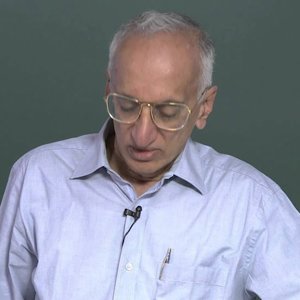
Chemical Engineering Thermodynamics by Prof. M.S. Ananth (NPTEL):- Lecture 01: Thermodynamics and the Chemical Industry
Copyright strictly reserved to Prof Prof. M.S. Ananth and NPTEL, Govt of India. Duplication prohibited. Lectures: http://www.nptel.ac.in/courses/103106070/ Syllabus: http://www.nptel.ac.in/syllabus/syllabus.php?subjectId=103106070- Wrichik Basu
- Media item
- chemical engineering nptel thermodaynamics
- Comments: 0
- Category: Engineering
-
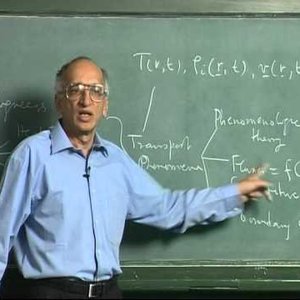
Chemical Engineering Thermodynamics by Prof. M.S. Ananth (NPTEL):- Lecture 02: James Prescot Joule and the first law
Copyright strictly reserved to Prof Prof. M.S. Ananth and NPTEL, Govt of India. Duplication prohibited. Lectures: http://www.nptel.ac.in/courses/103106070/ Syllabus: http://www.nptel.ac.in/syllabus/syllabus.php?subjectId=103106070- Wrichik Basu
- Media item
- chemical engineering nptel thermodaynamics
- Comments: 0
- Category: Engineering
-
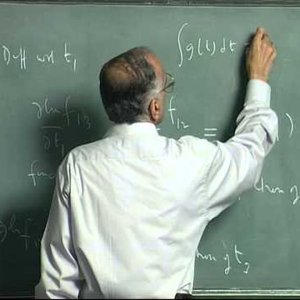
Chemical Engineering Thermodynamics by Prof. M.S. Ananth (NPTEL):- Lecture 03: Sadi Carnot and the second law
Copyright strictly reserved to Prof Prof. M.S. Ananth and NPTEL, Govt of India. Duplication prohibited. Lectures: http://www.nptel.ac.in/courses/103106070/ Syllabus: http://www.nptel.ac.in/syllabus/syllabus.php?subjectId=103106070- Wrichik Basu
- Media item
- chemical engineering nptel thermodaynamics
- Comments: 0
- Category: Engineering
-
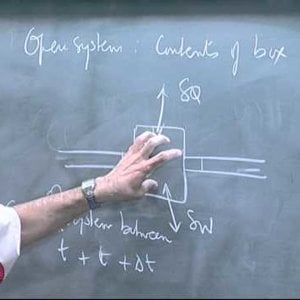
Chemical Engineering Thermodynamics by Prof. M.S. Ananth (NPTEL):- Lecture 04: Equilibrium and Extrema in work
Copyright strictly reserved to Prof Prof. M.S. Ananth and NPTEL, Govt of India. Duplication prohibited. Lectures: http://www.nptel.ac.in/courses/103106070/ Syllabus: http://www.nptel.ac.in/syllabus/syllabus.php?subjectId=103106070- Wrichik Basu
- Media item
- chemical engineering nptel thermodaynamics
- Comments: 0
- Category: Engineering
-
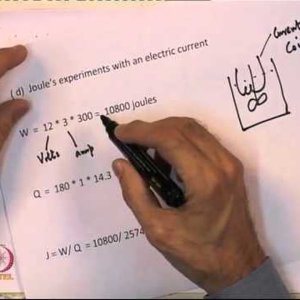
Chemical Engineering Thermodynamics by Prof. M.S. Ananth (NPTEL):- Lecture 05: Illustrative Calculations I
Copyright strictly reserved to Prof Prof. M.S. Ananth and NPTEL, Govt of India. Duplication prohibited. Lectures: http://www.nptel.ac.in/courses/103106070/ Syllabus: http://www.nptel.ac.in/syllabus/syllabus.php?subjectId=103106070- Wrichik Basu
- Media item
- chemical engineering nptel thermodaynamics
- Comments: 0
- Category: Engineering
-
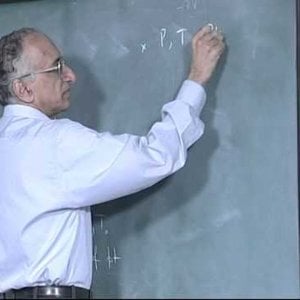
Chemical Engineering Thermodynamics by Prof. M.S. Ananth (NPTEL):- Lecture 06: Properties of pure substances
Copyright strictly reserved to Prof Prof. M.S. Ananth and NPTEL, Govt of India. Duplication prohibited. Lectures: http://www.nptel.ac.in/courses/103106070/ Syllabus: http://www.nptel.ac.in/syllabus/syllabus.php?subjectId=103106070- Wrichik Basu
- Media item
- chemical engineering nptel thermodaynamics
- Comments: 0
- Category: Engineering
-
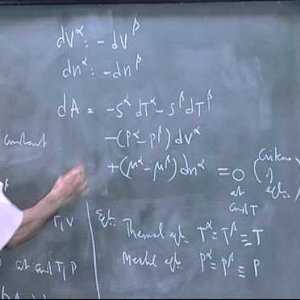
Chemical Engineering Thermodynamics by Prof. M.S. Ananth (NPTEL):- Lecture 07: The p-h chart
Copyright strictly reserved to Prof Prof. M.S. Ananth and NPTEL, Govt of India. Duplication prohibited. Lectures: http://www.nptel.ac.in/courses/103106070/ Syllabus: http://www.nptel.ac.in/syllabus/syllabus.php?subjectId=103106070- Wrichik Basu
- Media item
- chemical engineering nptel thermodaynamics
- Comments: 0
- Category: Engineering
-
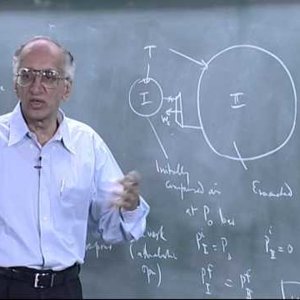
Chemical Engineering Thermodynamics by Prof. M.S. Ananth (NPTEL):- Lecture 08: Work calculation
Copyright strictly reserved to Prof Prof. M.S. Ananth and NPTEL, Govt of India. Duplication prohibited. Lectures: http://www.nptel.ac.in/courses/103106070/ Syllabus: http://www.nptel.ac.in/syllabus/syllabus.php?subjectId=103106070- Wrichik Basu
- Media item
- chemical engineering nptel thermodaynamics
- Comments: 0
- Category: Engineering
-
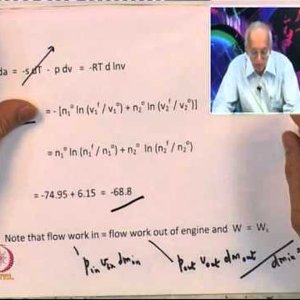
Chemical Engineering Thermodynamics by Prof. M.S. Ananth (NPTEL):- Lecture 09: Illustrative Calculations II
Copyright strictly reserved to Prof Prof. M.S. Ananth and NPTEL, Govt of India. Duplication prohibited. Lectures: http://www.nptel.ac.in/courses/103106070/ Syllabus: http://www.nptel.ac.in/syllabus/syllabus.php?subjectId=103106070- Wrichik Basu
- Media item
- chemical engineering nptel thermodaynamics
- Comments: 0
- Category: Engineering
-
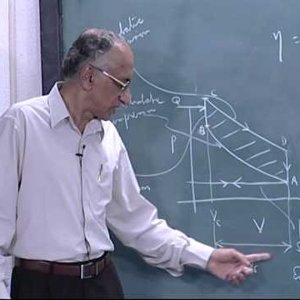
Chemical Engineering Thermodynamics by Prof. M.S. Ananth (NPTEL):- Lecture 10: Heat-Work Interconversion Devices
Copyright strictly reserved to Prof Prof. M.S. Ananth and NPTEL, Govt of India. Duplication prohibited. Lectures: http://www.nptel.ac.in/courses/103106070/ Syllabus: http://www.nptel.ac.in/syllabus/syllabus.php?subjectId=103106070- Wrichik Basu
- Media item
- chemical engineering nptel thermodaynamics
- Comments: 0
- Category: Engineering
-
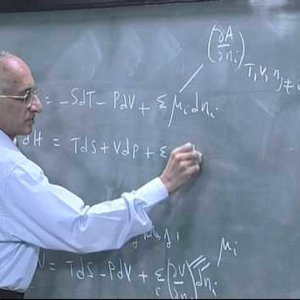
Chemical Engineering Thermodynamics by Prof. M.S. Ananth (NPTEL):- Lecture 11: Refrigeration/ Thermodynamics of mixtures
Copyright strictly reserved to Prof Prof. M.S. Ananth and NPTEL, Govt of India. Duplication prohibited. Lectures: http://www.nptel.ac.in/courses/103106070/ Syllabus: http://www.nptel.ac.in/syllabus/syllabus.php?subjectId=103106070- Wrichik Basu
- Media item
- chemical engineering nptel thermodaynamics
- Comments: 0
- Category: Engineering
-
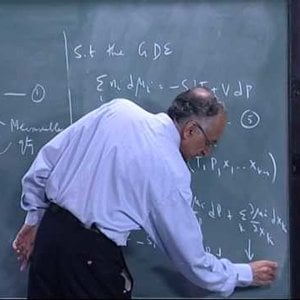
Chemical Engineering Thermodynamics by Prof. M.S. Ananth (NPTEL):- Lecture 12: The Gibbs Duhem equation
Copyright strictly reserved to Prof Prof. M.S. Ananth and NPTEL, Govt of India. Duplication prohibited. Lectures: http://www.nptel.ac.in/courses/103106070/ Syllabus: http://www.nptel.ac.in/syllabus/syllabus.php?subjectId=103106070- Wrichik Basu
- Media item
- chemical engineering nptel thermodaynamics
- Comments: 0
- Category: Engineering
-
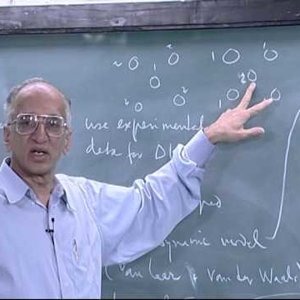
Chemical Engineering Thermodynamics by Prof. M.S. Ananth (NPTEL):- Lecture 13: Models for Excess Gibbs Free Energy
Copyright strictly reserved to Prof Prof. M.S. Ananth and NPTEL, Govt of India. Duplication prohibited. Lectures: http://www.nptel.ac.in/courses/103106070/ Syllabus: http://www.nptel.ac.in/syllabus/syllabus.php?subjectId=103106070- Wrichik Basu
- Media item
- chemical engineering nptel thermodaynamics
- Comments: 0
- Category: Engineering
-
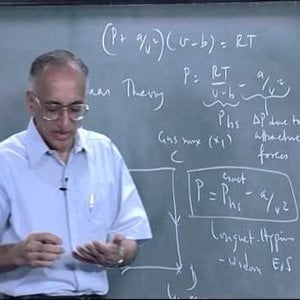
Chemical Engineering Thermodynamics by Prof. M.S. Ananth (NPTEL):- Lecture 14: Van Laar model
Copyright strictly reserved to Prof Prof. M.S. Ananth and NPTEL, Govt of India. Duplication prohibited. Lectures: http://www.nptel.ac.in/courses/103106070/ Syllabus: http://www.nptel.ac.in/syllabus/syllabus.php?subjectId=103106070- Wrichik Basu
- Media item
- chemical engineering nptel thermodaynamics
- Comments: 0
- Category: Engineering
-
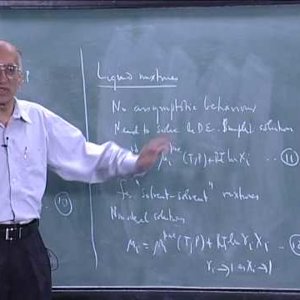
Chemical Engineering Thermodynamics by Prof. M.S. Ananth (NPTEL):- Lecture 15: Gaseous and liquid mixtures
Copyright strictly reserved to Prof Prof. M.S. Ananth and NPTEL, Govt of India. Duplication prohibited. Lectures: http://www.nptel.ac.in/courses/103106070/ Syllabus: http://www.nptel.ac.in/syllabus/syllabus.php?subjectId=103106070- Wrichik Basu
- Media item
- chemical engineering nptel thermodaynamics
- Comments: 0
- Category: Engineering
-
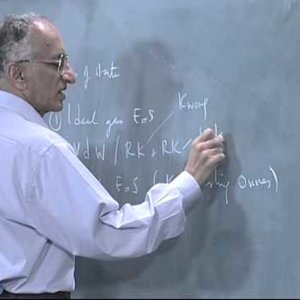
Chemical Engineering Thermodynamics by Prof. M.S. Ananth (NPTEL):- Lecture 16: Separation Work/ Equations of state
Copyright strictly reserved to Prof Prof. M.S. Ananth and NPTEL, Govt of India. Duplication prohibited. Lectures: http://www.nptel.ac.in/courses/103106070/ Syllabus: http://www.nptel.ac.in/syllabus/syllabus.php?subjectId=103106070- Wrichik Basu
- Media item
- chemical engineering nptel thermodaynamics
- Comments: 0
- Category: Engineering